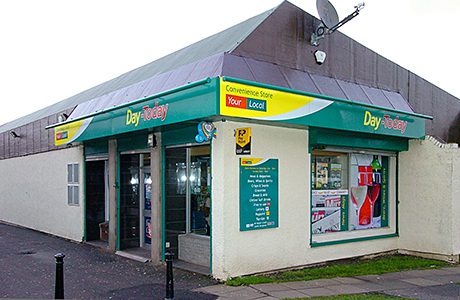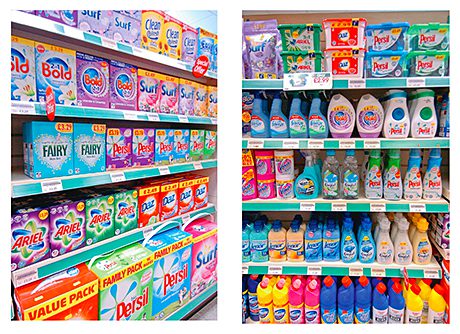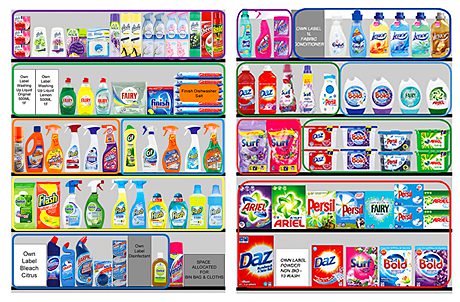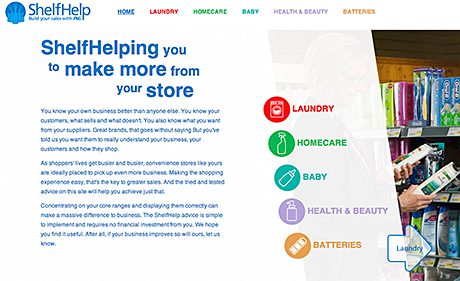

BECKY Spencer spends a lot of her time looking at shelves in Britain’s local community stores.
As shopper-based design manager and head of ShelfHelp at P&G she’s probably done as much as anyone to help consumers find what they recognise, what they want, and what goes with it, in the product categories that P&G covers. Those include several important non-food categories that feature heavily in regular c-store shopping, top-up shopping visits, and visits for emergency and distress purchases, such as: laundry and fabric care, homecare, hair and beauty, grooming, personal care, and batteries.
And, of course, helping consumers in those shopping missions helps c-stores too – not just to sell more products but to sell themselves as a reliable sources of key lines, a place where consumers know they’ll be able to pick up the brands, lines, types and sizes they’re looking for.
It’s important, she told Scottish Grocer, to realise that any good category management advice programme shouldn’t just be about the supplier’s brands. The intention is to place lines and brands of all types in the best locations and shelf positions to meet consumers’ needs, that’s how it works best for suppliers, retailers and shoppers alike.
And that’s definitely the philosophy of ShelfHelp. The P&G programme was one of the first category management advisory schemes to offer solid evidence-based advice specially prepared for convenience outlets. It went through a major upgrade in 2010 when it produced focused, user-friendly single-sheet guidelines for each of the firm’s product categories. And, since then, its online advice site www.shelfhelp.co.uk has been carefully developed to the point where it now offers easy-to-access advice and planograms for convenience outlets of different styles and sizes.
Scottish Grocer invited P&G, and Becky, to take ShelfHelp on the road in Scotland to give retailers a chance to talk one-to-one about category management in the real world.
Becky visited the Day-Today store in Varnsdorf Way, in Petersburn, a residential area on the south-east edge of Airdrie. It’s owned by Naveed Amjed, who moved there from another store in the area, and managed by experienced retailer Lynn Johnstone.
It’s quite a substantial store, in effect a small supermarket for the area.
The plan was to discuss, especially, the laundry and fabric care category and the closely related homecare category and also to take a look at some aspects of grooming and of infant care.
When the ShelfHelp chief entered the shop she could see immediately it was very well-stocked and faced-up in all categories.
Both laundry and homecare featured five-shelf sections.
P&G research shows laundry is an important c-store product category, worth almost £100m to Britain’s local shops. The typical c-store laundry product buyer visits a c-store three times a week and spends on average almost £11 a visit.
In laundry, Becky noted, Lynn had all the main formats represented, she also stocked all of the key brands and availability was excellent, so the Petersburn Day-Today was ticking many of the laundry category management boxes that the ShelfHelp programme highlights.
But there were some observations and recommendations that Becky could make.
While all the main fabric detergent formats were represented, the Airdrie store perhaps dedicated a little too much space to powders, she thought. The store stocked a large number of brands across both laundry and homecare categories (homecare especially) and had quite a number of entry-level-priced products.

It is good to offer good, better and best lines in the various sub-categories, Becky said, but if several value lines are stocked it reduces the space avaliable for brand leaders and can encourage shoppers to default to one of the cheaper options.
In homecare, if the store chose not to list quite so many brands and lines – for example of washing-up liquids – it could look at introducing products that have other functions such as dishwasher rinse-aid and dishwasher salt.
On the laundry shelves Becky recommended merchandising products (and using point-of-sale material) in a way that explained the three-step wash process. So the shelves should have pre-wash treatments like stain remover, detergents in a variety of formats, and fabric care lines close together and arranged in sequence.
In homecare, Becky said, shoppers want to shop “by room”. So place kitchen items together. It can be useful also to have items like kitchen cloths in that area. Have bleach close to toilet-related lines and group certain living-room items such as air-fresheners, furniture care, and floorcare items in the same section.
Next time we look at more categories including the baby section.



















